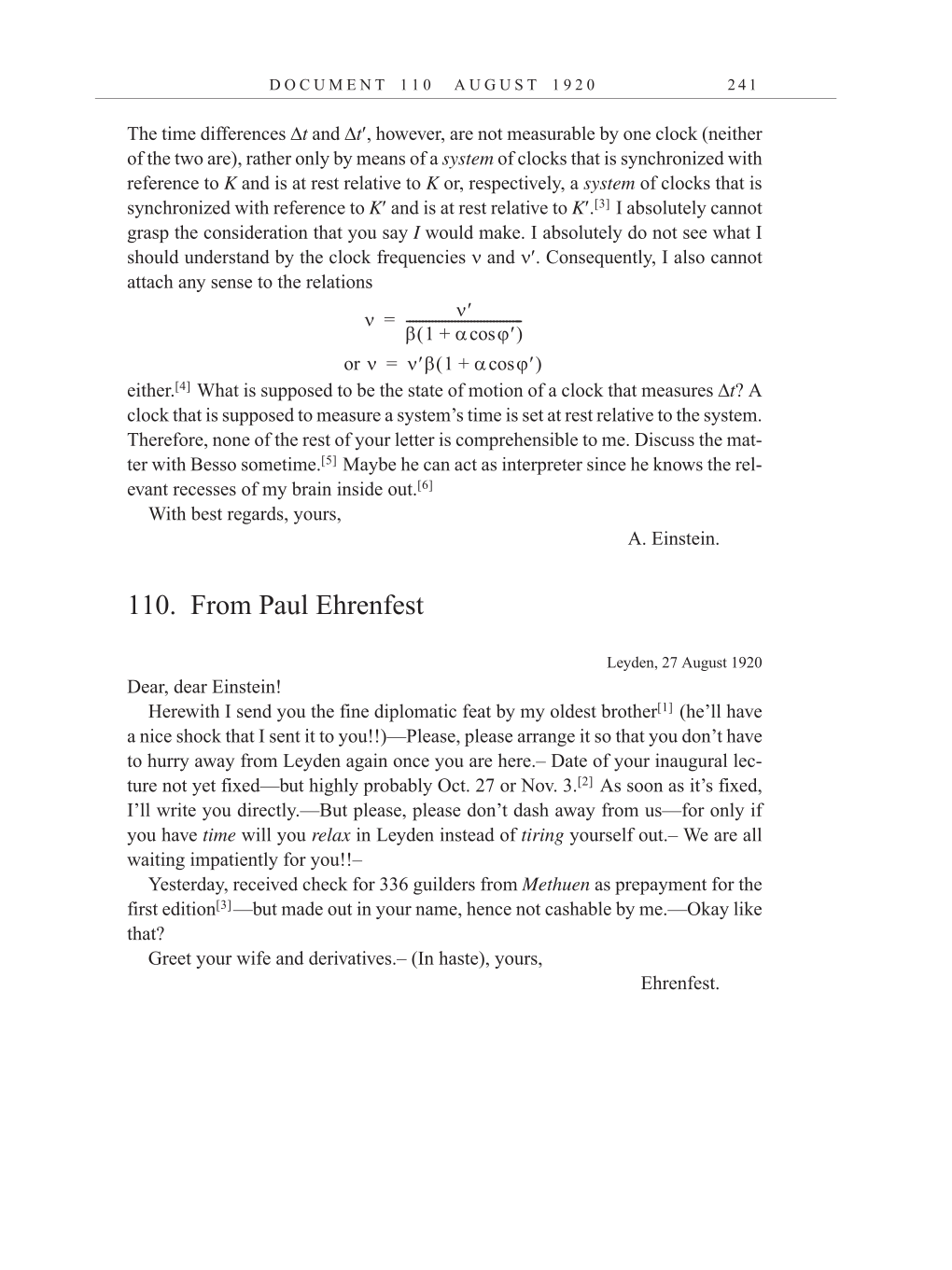D O C U M E N T 1 1 0 A U G U S T 1 9 2 0 2 4 1
The time differences t and t , however, are not measurable by one clock (neither
of the two are), rather only by means of a system of clocks that is synchronized with
reference to K and is at rest relative to K or, respectively, a system of clocks that is
synchronized with reference to K and is at rest relative to K
.[3]
I absolutely cannot
grasp the consideration that you say I would make. I absolutely do not see what I
should understand by the clock frequencies and . Consequently, I also cannot
attach any sense to the relations
or
either.[4] What is supposed to be the state of motion of a clock that measures t? A
clock that is supposed to measure a system’s time is set at rest relative to the system.
Therefore, none of the rest of your letter is comprehensible to me. Discuss the mat-
ter with Besso sometime.[5] Maybe he can act as interpreter since he knows the rel-
evant recesses of my brain inside out.[6]
With best regards, yours,
A. Einstein.
110. From Paul Ehrenfest
Leyden, 27 August 1920
Dear, dear Einstein!
Herewith I send you the fine diplomatic feat by my oldest brother[1] (he’ll have
a nice shock that I sent it to you!!)—Please, please arrange it so that you don’t have
to hurry away from Leyden again once you are here.– Date of your inaugural lec-
ture not yet fixed—but highly probably Oct. 27 or Nov. 3.[2] As soon as it’s fixed,
I’ll write you directly.—But please, please don’t dash away from us—for only if
you have time will you relax in Leyden instead of tiring yourself out.– We are all
waiting impatiently for you!!–
Yesterday, received check for 336 guilders from Methuen as prepayment for the
first edition[3] —but made out in your name, hence not cashable by me.—Okay like
that?
Greet your wife and derivatives.– (In haste), yours,
Ehrenfest.
1 cos +
------------------------------------ =
1 cos + =
